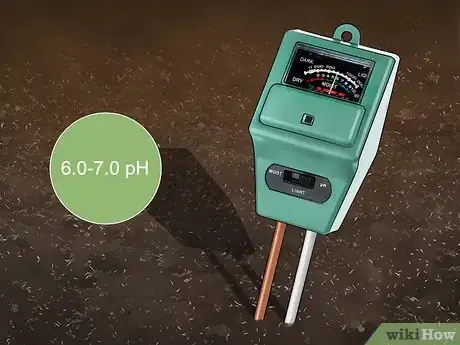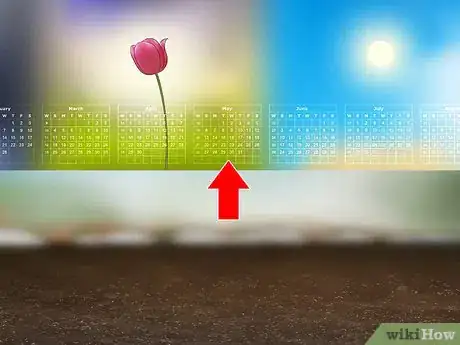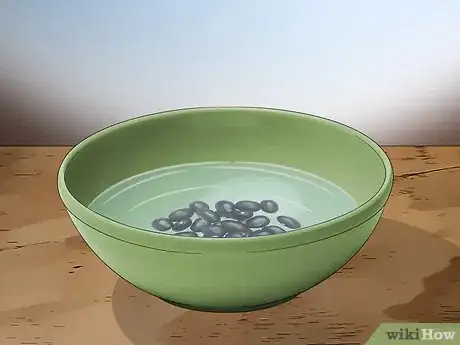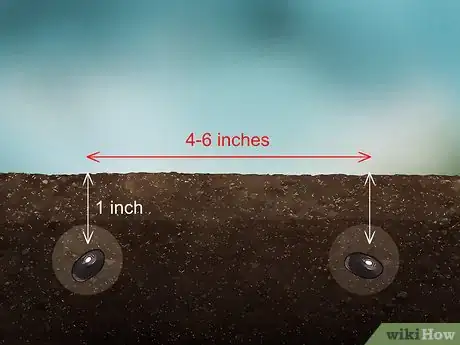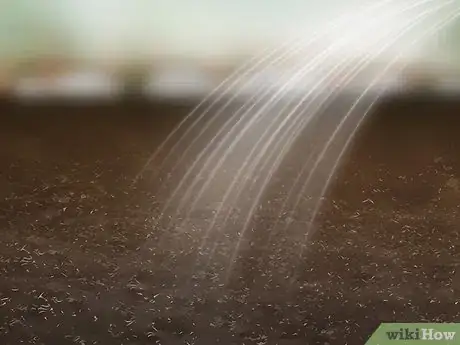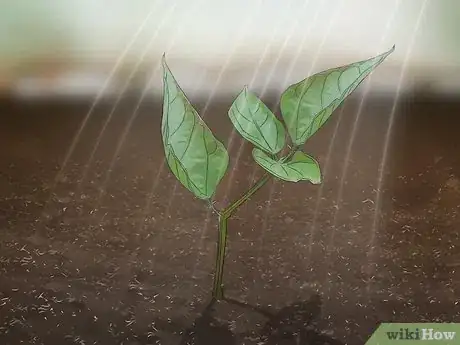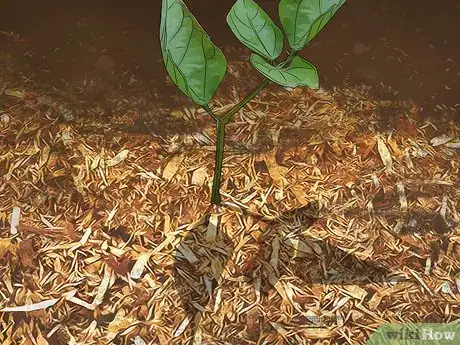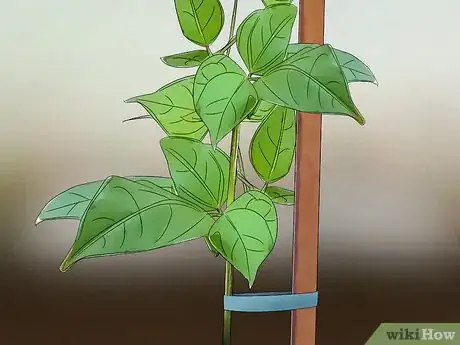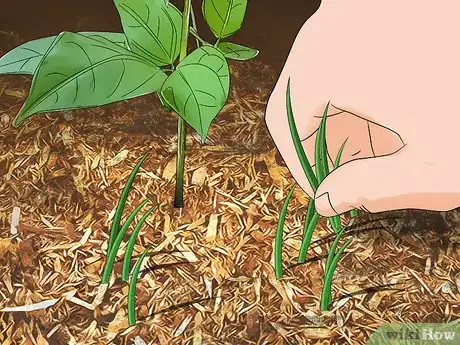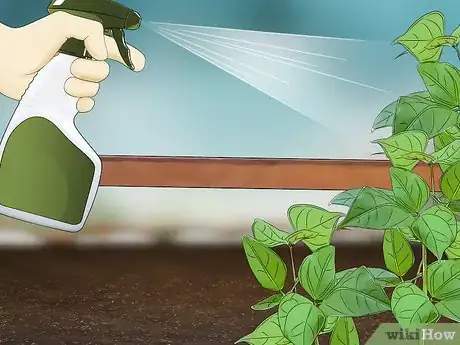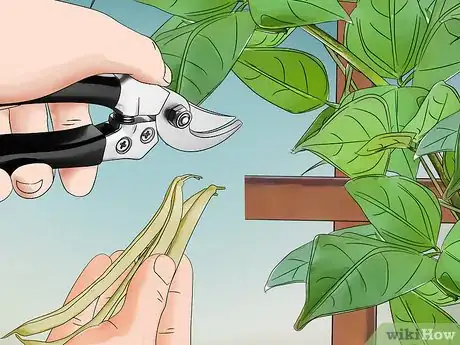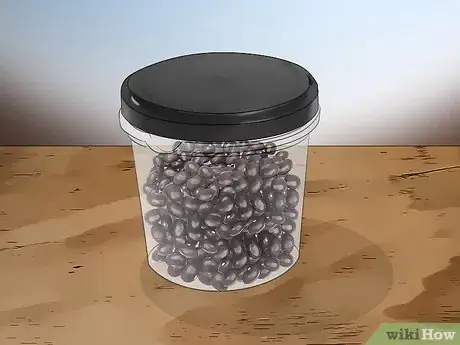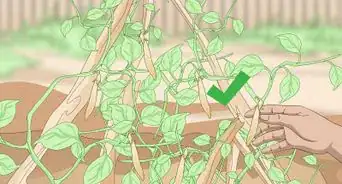This article was co-authored by Lauren Kurtz and by wikiHow staff writer, Megaera Lorenz, PhD. Lauren Kurtz is a Naturalist and Horticultural Specialist. Lauren has worked for Aurora, Colorado managing the Water-Wise Garden at Aurora Municipal Center for the Water Conservation Department. She earned a BA in Environmental and Sustainability Studies from Western Michigan University in 2014.
There are 9 references cited in this article, which can be found at the bottom of the page.
wikiHow marks an article as reader-approved once it receives enough positive feedback. In this case, 91% of readers who voted found the article helpful, earning it our reader-approved status.
This article has been viewed 94,847 times.
Black beans, also known as turtle beans, Tampico beans, or Mexican black beans, are hardy and tasty beans that make a nutritious addition to many dishes. They are also easy to grow and care for. With a little preparation and TLC, you can grow and harvest black beans in your own garden.
Things You Should Know
- Plant black beans in late spring.
- Grow black beans in a spot that gets at least 6 hours of direct sunlight per day.
- Black beans don't need much water. Only water them when the soil is dry or they appear wilted.
Steps
Preparing a Planting Location
-
1
-
2Check your soil pH and amend your soil if necessary. Black beans grow best in soil that has a pH of 6.0-6.5.[3] Get a home pH test kit at your local garden center, or bring in a sample of your soil for testing.
- If your soil pH is too low or too high, you may need to amend it. If the pH is too low, you can raise it by adding some lime. If it’s too high, you can add some sulfur.
- Amending your soil’s pH can take several months, so plan ahead and test your soil well before you plant your beans.
- Since it's so difficult to change the pH of your soil, you might consider growing your beans in a raised bed if your soil isn't right. Alternatively, you could grown a different bean.
Advertisement -
3Add some low-nitrogen fertilizer to your soil. Bean plants generally do not need a lot of fertilizer. However, if you’ve grown other plants, especially other bean plants, on the same plot, it may be a good idea to enrich your soil with a bit of organic fertilizer before planting. Select a fertilizer with a low-nitrogen content for ideal bean production.[4]
- Since it's a vegetable, giving black bean plants too much nitrogen can cause your plants to produce lots of leaves and only a few beans.
Planting Your Black Beans
-
1Buy dry black bean seeds. You can buy black beans online or from a local seed store or garden center. You may find them under the name “black turtle beans.”
-
2Plant in late spring. Black beans flourish in warm weather. Plant them in late spring (e.g. in May), so that they can take full advantage of the summer sun.
-
3Pre-soak your black beans before planting. Black bean seeds germinate more easily if you prep them by soaking them for a few hours or overnight. Soak your beans in clean water for at least 2 hours before planting.
-
4Inoculate your beans or soil. Your beans will be able to make better use of nitrogen in the soil if you apply a legume inoculant, either to the soil or directly to the beans.[7] Check your local garden supply store or look online for an inoculant formulated for beans and other legumes.
- You can use mycorrhizal fungi as an inoculate to help the roots form and to help the plant with nitrogen fixation.
- You can apply some inoculants by pouring the beans into a bag with the inoculant and shaking gently to coat the beans. Others must be mixed into the soil before planting. Follow the directions on the product package.
-
5Plant your beans 1 inch (2.5 cm) deep and 4-6 inches (10-15 cm) apart. If you wish, you can simply make a long furrow about 1 inch (2.5 cm) deep and space your beans out along the furrow, instead of making a series of separate holes. Make sure your beans are spaced far enough apart so that they have room to spread out as they grow. Cover your beans with a light layer of soil (enough to fill the planting holes or furrows) after planting.[8]
- Give your beans a little extra space (at least 6 inches or 15 cm) between each plant if they are a bush variety as opposed to a vining variety.
- Sow your beans with the eyes facing down.[9]
-
6Water your beans after planting. Moistening the soil at planting time will encourage the beans to germinate. Lightly water your soil after planting, so that the soil is damp but not soggy. Make sure to keep the soil moist as the beans are beginning to grow.[10]
Caring for Your Bean Plants
-
1Water your bean plants if they appear wilted in the morning. Black beans are hardy plants that don’t need a lot of water. Water your beans if the soil feels dry or nearly dry, or if you notice that your beans look wilted early in the morning.[11]
- Take care not to over-water your beans. Black beans will start to rot at the roots if they sit in soggy soil too long.[12]
-
2Place mulch around the bases of your bean plants. Mulch can help keep weeds at bay, retain soil moisture, and keep the soil warm.[13] Look for an organic mulching material, such as chopped straw or hay.[14]
- Mulch your beans about 2-3 weeks after planting, or once the plants have sprouted and grown a couple of leaves.[15]
- Leave 1-2 inches (2.5-5 cm) of mulch-free space around the stem of each plant. Having mulch up against the stems may cause the plants to rot.
-
3Tie your bean plants to a trellis or pole, if necessary. If your black beans are of a vining variety, they will need some type of support. Once your bean plants start to grow, put a pole or trellis next to each plant. You may need to gently tie the plant to the pole or trellis in order to train it to grow along the support.[16]
- Each trellis or pole should be about 3 feet (.9 m) high.
-
4Take care not to disturb the roots when weeding around your beans. Black beans have shallow roots, so you will need to use caution when pulling up any weeds around your plants. Always pull up weeds by hand, and try to minimize weed growth as much as possible by mulching around your beans and weeding the plot before planting.[17]
-
5Use pesticides or natural methods to protect your beans from aphids. Black beans are susceptible to aphids and other pests. Aphids are a particular concern, because they can infect your beans with the mosaic virus.[18] Rinse off any pests with a garden hose on a sharp spray setting, or pick them off by hand. For a more long-term solution, you may wish to apply a pyrethrin or neem oil spray.
- If you’d rather not use chemical pesticides, try introducing some ladybugs to your garden. Ladybugs will eat aphids and other pest insects. You may be able to purchase ladybugs at your local garden center.
Harvesting and Storing Your Black Beans
-
1Harvest the beans when the pods turn yellow and dry. You will know your pods are ready to harvest when they become yellow, dry, and hard. You can harvest the pods while they are still green, but you will need to let them mature and dry completely before you can remove the beans inside.[19]
- Black beans generally reach maturity and are ready for harvest 90-140 days after planting.
- If your black bean plant is a bush variety, all the pods should mature at the same time. If you have a vining variety, you will need to harvest the pods regularly throughout the growing season to encourage continued production.
-
2Cut mature pods off of the bean plant. When the pods become dry and yellow, take a pair of scissors or a small pruner and snip off any mature pods. If you’re not totally sure that the pods are mature, break one open and see if the beans inside are dry and black (immature beans will be moist and paler in color). You can also try biting down on a bean. If it’s dry and ready to harvest, your teeth won’t leave a dent.[20]
- You can harvest immature or fresh beans before they are fully dry, but you can't store them for as long.
- Try to harvest your beans during dry weather. If your beans are almost ready to harvest but the forecast calls for a lot of rain, bring the whole plant indoors and hang it upside-down so it can finish drying inside.[21]
-
3Remove the beans from the pods and let them dry. Once you’ve harvested the pods, crack them open to remove the beans inside. Spread the beans out on a flat surface and let them dry for a day or two before cooking or storing.
- Hand-shelling black beans can be tedious work. You may find it easiest to collect the beans if you put all the pods in a sack or pillowcase and stomp on it or hit it against a wall a few times.[22]
-
4Store your dried beans in an airtight container. Your black beans will keep for up to a year if you store them properly. Keep them in a cool, dry place, and place them in an airtight container to protect them from moisture and insects.[23]
Things You’ll Need
- Soil pH test kit
- Low-nitrogen fertilizer
- Dry black bean seeds
- Clean water
- Legume inoculant
- Organic mulch (such as straw or hay)
- Trellis or pole for each plant
- Pesticides or beneficial garden insects (such as ladybugs)
- Scissors or pruner
- Sack or pillowcase
- Airtight container
References
- ↑ http://www.gardeningblog.net/how-to-grow/black-beans/
- ↑ https://www.growthis.com/how-to-grow-black-beans/
- ↑ https://www.growthis.com/how-to-grow-black-beans/
- ↑ http://www.gardeningblog.net/how-to-grow/black-beans/
- ↑ http://www.gardeningblog.net/how-to-grow/black-beans/
- ↑ https://www.growthis.com/how-to-grow-black-beans/
- ↑ https://www.growthis.com/how-to-grow-black-beans/
- ↑ http://www.gardeningblog.net/how-to-grow/black-beans/
- ↑ https://www.growthis.com/how-to-grow-black-beans/
- ↑ https://commonsensehome.com/grow-pole-beans/
- ↑ https://garden.org/learn/articles/view/454/
- ↑ https://www.growthis.com/how-to-grow-black-beans/
- ↑ https://www.growthis.com/how-to-grow-black-beans/
- ↑ https://www.weeklytimesnow.com.au/country-living/gardening/peter-cundall-mulch-for-best-beans/news-story/f205eca3450e04606a3e63cc08258a41
- ↑ http://www.emmitsburg.net/gardens/articles/adams/2009/mulching.htm
- ↑ https://www.growthis.com/how-to-grow-black-beans/
- ↑ https://www.growthis.com/how-to-grow-black-beans/
- ↑ http://www.gardeningblog.net/how-to-grow/black-beans/
- ↑ https://www.growthis.com/how-to-grow-black-beans/
- ↑ http://www.gardeningblog.net/how-to-grow/black-beans/
- ↑ https://www.hobbyfarms.com/how-to-harvest-dried-beans-2/
- ↑ http://www.gardeningblog.net/how-to-grow/black-beans/
- ↑ http://www.gardeningblog.net/how-to-grow/black-beans/
- ↑ https://www.backdoorsurvival.com/why-and-how-to-grow-black-beans/
- ↑ http://homeguides.sfgate.com/plant-black-beans-40510.html
About This Article
Black beans are tasty and hardy beans that are easy to grow in your garden. Plant them in the late spring so they can take advantage of the summer sun. Before you plant your seeds, you’ll need to soak them in clean water for at least 2 hours to help them germinate. Plant them somewhere they’ll get about 6 hours of sunlight a day. If you’ve grown other plants in your soil recently, add some low-nitrogen fertilizer to the soil to give them a nutrients boost. Once you’ve planted the seeds, water them so the soil is damp. Whenever your plants appear wilted in the mornings, water them. If you use a vining variety, you may need to provide a trellis or stakes for support. For more tips from our Gardening co-author, including how to harvest and store your black beans, read on!

